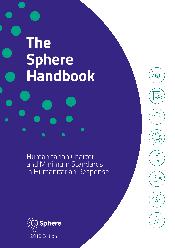Shelter Cluster Vanuatu is led by

Under the leadership of the Public Works Department (PWD), the Shelter Cluster is formed by Government and non-Government member agencies with expertise, activities, stakeholders, and resources in the area of shelter, which can provide assistance in disaster preparedness and response.
Category 2 Tropical Cyclone Hola hit the islands of Ambrym, Pentecost, Ambae, Malekula and Malo across 7th and 8th March 2018 causing significant damage to housing, food gardens and community infrastructure. On 18th March the alert level for Manaro Voui Volcano was raised from level 2 to level 3, as Ambae and surrounding islands felt the effects of continuous ash fall and acid rain which contaminated water sources, destroyed food gardens, and led to the collapse of local-style houses. On 12th April the Council of Minister’s (COM) decision declared a State of Emergency up to 13th July, that was later extended several times before eventually ending on 26th November. Multi-sectoral emergency response commenced when affected populations began moving to designated evacuation centres, host communities, and host families first on Ambae Island, and later to neighbouring islands.
The 11,000 Ambae Island inhabitants were mandatorily evacuated in late July, and displaced primarily on Maewo, Santo, and Efate Islands. Government response then focused on Maewo through the Second Home Programme which aims to resettle displaced people on new land, creating an alternative safe home for Ambaeans in the event of future volcanic activity on Ambae. NDMO also provided emergency food support to evacuees on Santo and Maewo and coordinated the overall response through Emergency Operation Centres (EOC) activated in Ambae then Maewo for Penama Province, Luganville for Sanma Province and at national level in Port Vila.
The early Shelter Cluster response had been mainly implemented by the Vanuatu Red Cross Society (VRCS) supported by IFRC Disaster Relief Emergency Fund (DREF) resources, on Ambae before the mandatory evacuation through emergency shelter and NFIs to 1,094 households, and 150 households in Santo in early September. Additional emergency shelter and NFIs were distributed in Maewo by Shelter Cluster partners early August with 2,050 tarpaulins, 202 shelter toolkits and other NFIs provided by Australian and New Zealand Governments.
CARE established an emergency shelter reinforcement programme for up to 500 households, with VRCS and Community Disaster Climate Change Committee (CDCCC) shelter focal points trained in safe shelter awareness. This program aim to also map strengthen up to 20 buildings with NDMO, community work and relevant line ministries, that would serve as safe shelters for the community during future cyclones. This part of the response, that is planned to be complemented in February 2019.
Shelter Cluster Vanuatu has been supported in the field by

Shelter Cluster Vanuatu coordination is supported by










